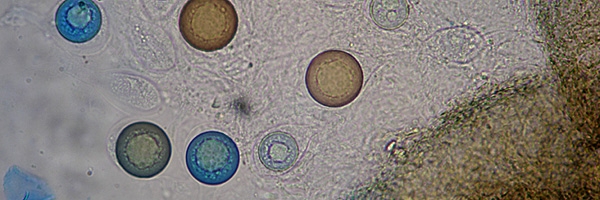
Monosporascus cannonballus Pollack & Uecker, (1974)
- Classification: Fungi, Basidiomycota, Lichinomycetes, Xylariomycetidae, Xylariales, Incertae_sedis_.
- English names: Monosporascus root rot, vine decline
A second species of Monosporascus , Monosporascus eutypoides (Petr.) Arx, (1976), is more occasionally involved in root dieback in melons.
Monosporascus cannonballus soil is a fungus * which is responsible for severe root dieback in several Cucurbitaceae. It mainly affects melon and watermelon, both in greenhouse and in fields. It is at the origin of significant reductions in yields which can negate the harvest in certain extreme cases.
This emerging disease is characterized by rapid and uniform wilting of whole crops usually two weeks before harvest. It has been identified in many production regions of the world, preferably in arid and semi-arid areas. It has been reported in particular in the United States (Arizona, California, Texas), and in other American countries (Mexico, Guatemala, Honduras, Brazil), in Asia (Japan, Korea, Taiwan ), India, Libya, Israel, Tunisia and in some European countries bordering France (Italy, Spain).
M. cannonballus had not yet been reported in our country until now, but we tended to think that the proximity of production areas already affected and located in neighboring countries, but also global warming should encourage us to vigilance. Our fears were founded: we were able to associate recently in 2012 a Monosporascus sp. the dieback of melon plants in a culture under cover located in the south of France , this in complex with Phomopsis sclerorioides .
* It should be noted that several fungi, alone or in complexes (this varying according to the production zones and the plots), have been associated in the world (Japan, Israel, Spain, Italy, USA ) with wilting and collapse of melon plants (vine decline, vine collapse), accompanied by lesions and root rots. Among the most common are: Acremonium cucurbitacearum (Syn. Nodulisporium melonis , now called Plectosphaerella melonis ), Macrophomina phaseolina , Monosporascus cannonballus , Pyrenochaeta lycopersici , Pythium spp., Rhizoctonia solani , Rhizopycnis ...





